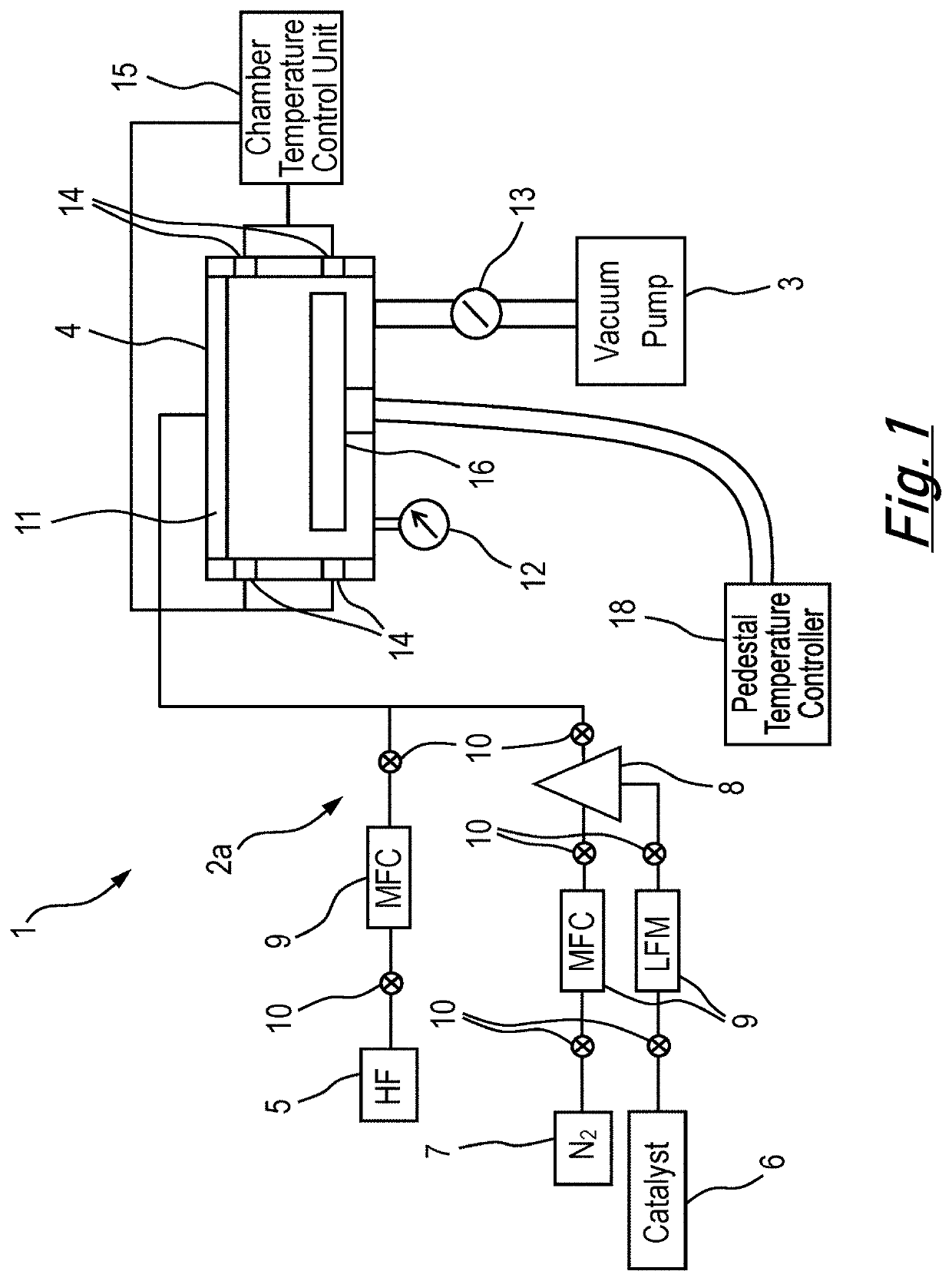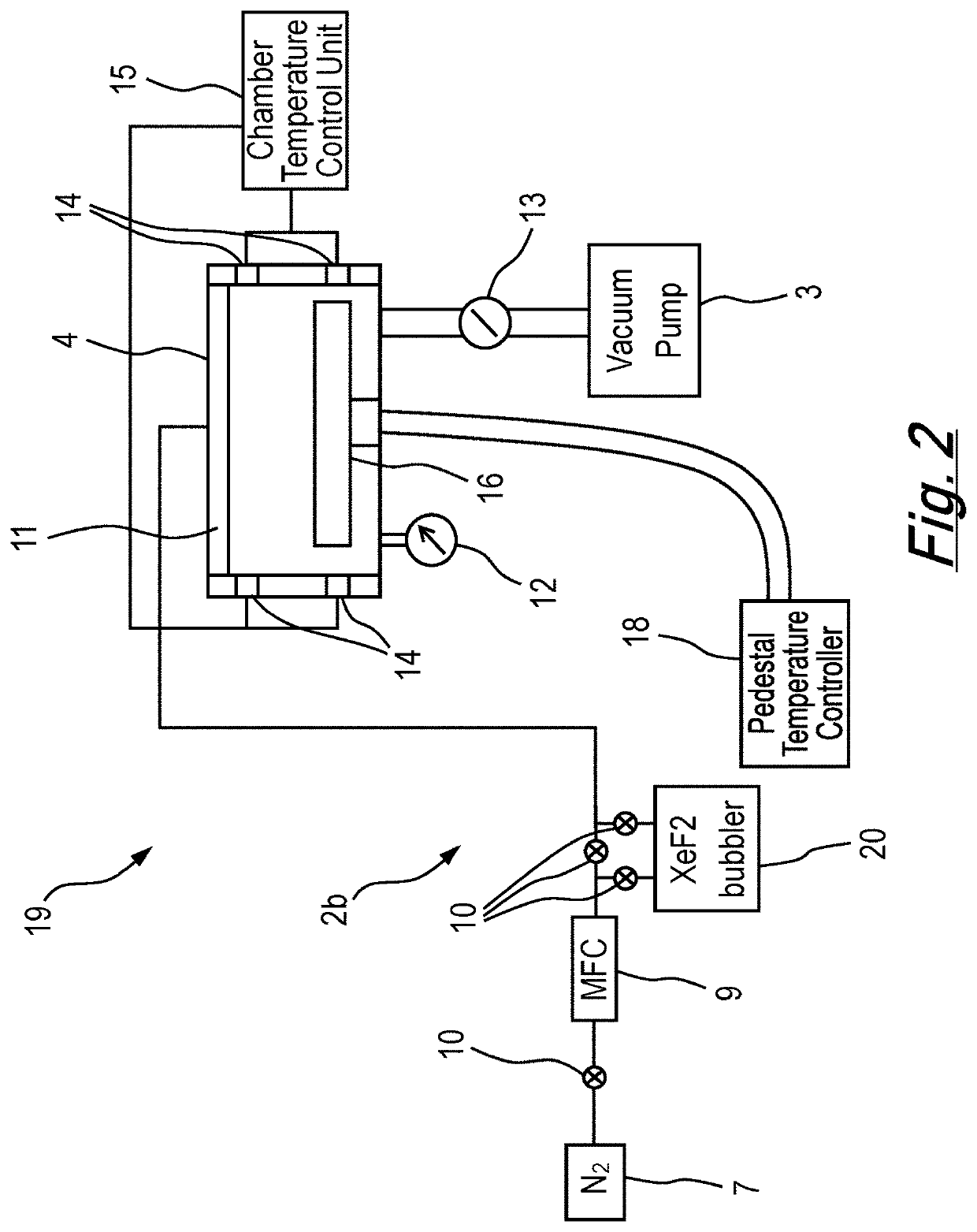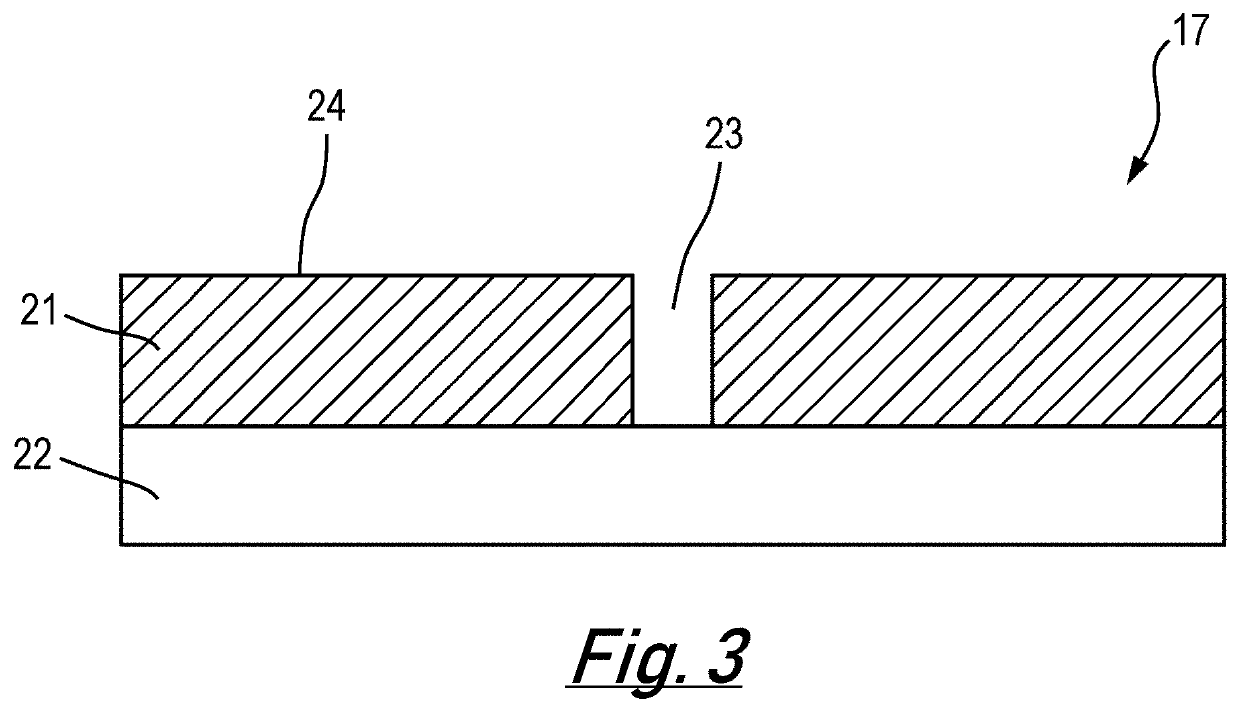A method for detecting defects in thin film layers
- Summary
- Abstract
- Description
- Claims
- Application Information
AI Technical Summary
Benefits of technology
Problems solved by technology
Method used
Image
Examples
Embodiment Construction
[0060]An explanation of the present invention will now be described with reference to FIGS. 1 to 7.
[0061]According to a first embodiment, FIG. 1 depicts a hydrogen fluoride (HF) vapour-based testing system 1 comprising a gas delivery system 2a and a vacuum pump 3 in fluid communication via a test chamber 4.
[0062]The gas delivery system 2a comprises an HF vapour source 5, a catalyst source 6 which takes the form of a water or alcohol source, a nitrogen gas source 7 and a vaporiser 8. Catalyst vapour for use within the test chamber 4 is produced by connecting the catalyst source 6 to the vaporiser 8. The nitrogen gas source 7 is a standard element of the vaporiser 8, and acts as a carrier gas to assist in transporting the catalyst vapour to the test chamber 4. When utilised, the catalyst vapour is employed during the HF vapour etch. Mass Flow Controllers or Liquid Flow Meters (MFC / LFM) 9 and pneumatic valves 10 are preferably provided within each supply line of the gas delivery system...
PUM
 Login to View More
Login to View More Abstract
Description
Claims
Application Information
 Login to View More
Login to View More - R&D Engineer
- R&D Manager
- IP Professional
- Industry Leading Data Capabilities
- Powerful AI technology
- Patent DNA Extraction
Browse by: Latest US Patents, China's latest patents, Technical Efficacy Thesaurus, Application Domain, Technology Topic, Popular Technical Reports.
© 2024 PatSnap. All rights reserved.Legal|Privacy policy|Modern Slavery Act Transparency Statement|Sitemap|About US| Contact US: help@patsnap.com










